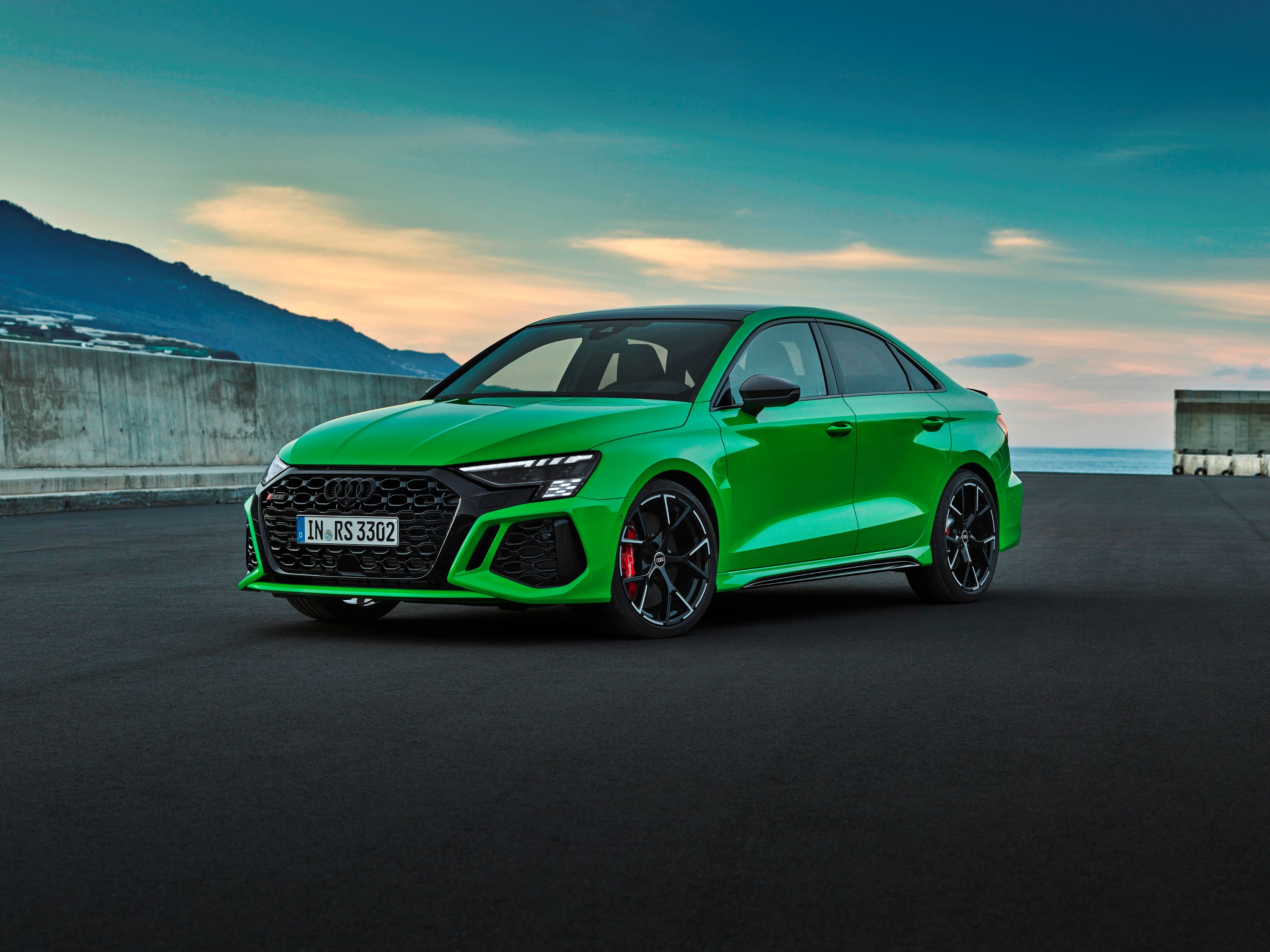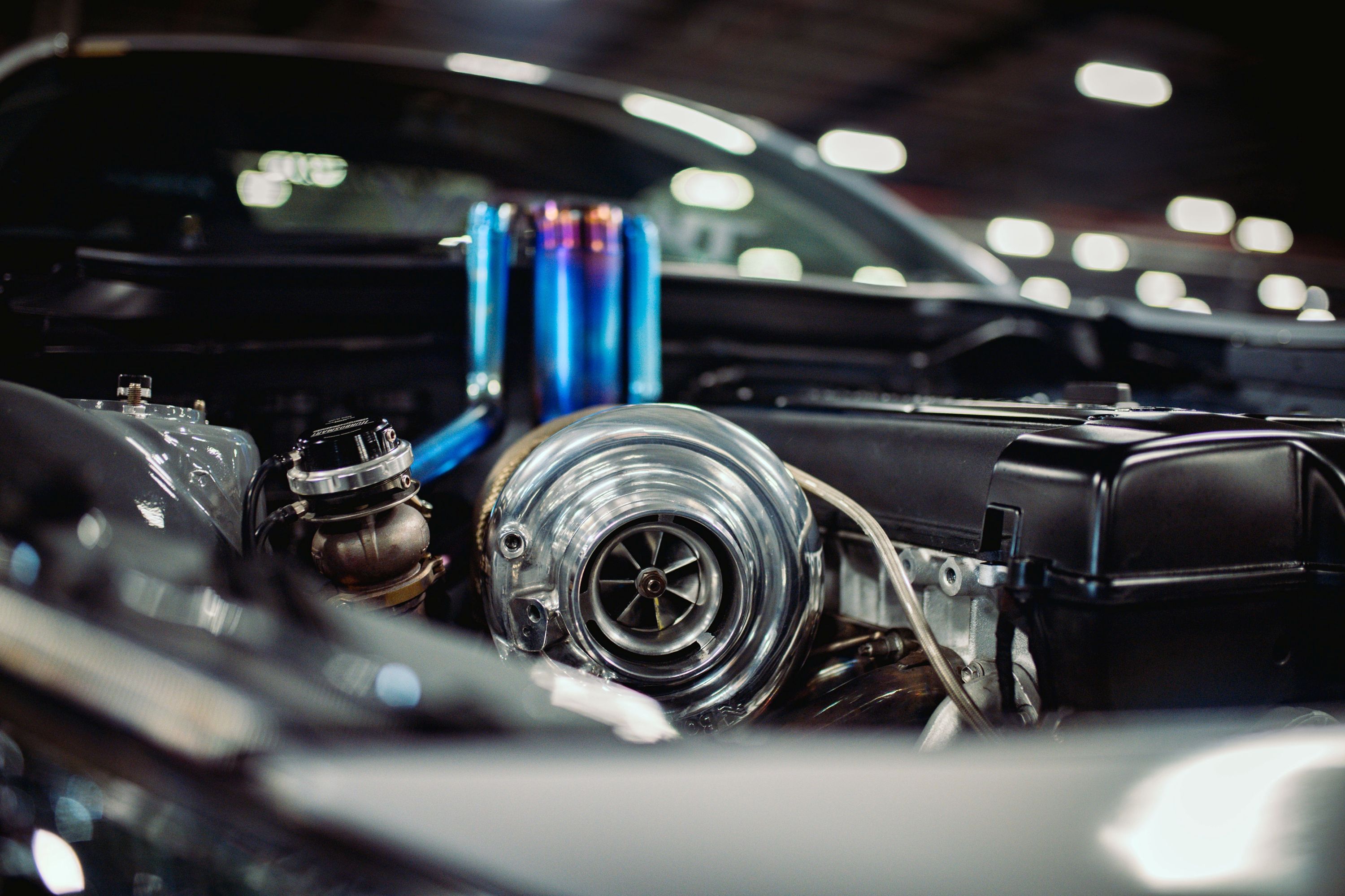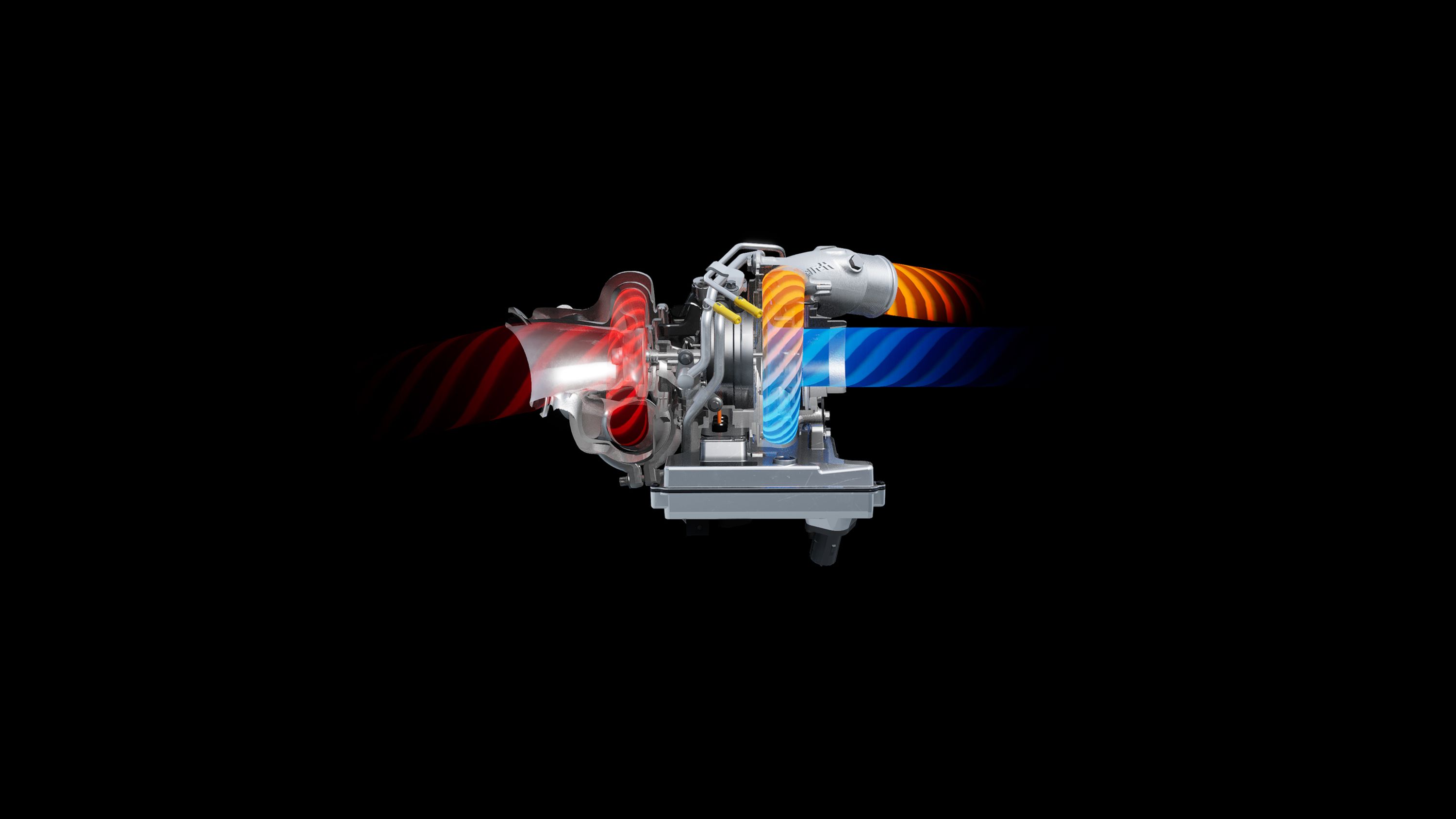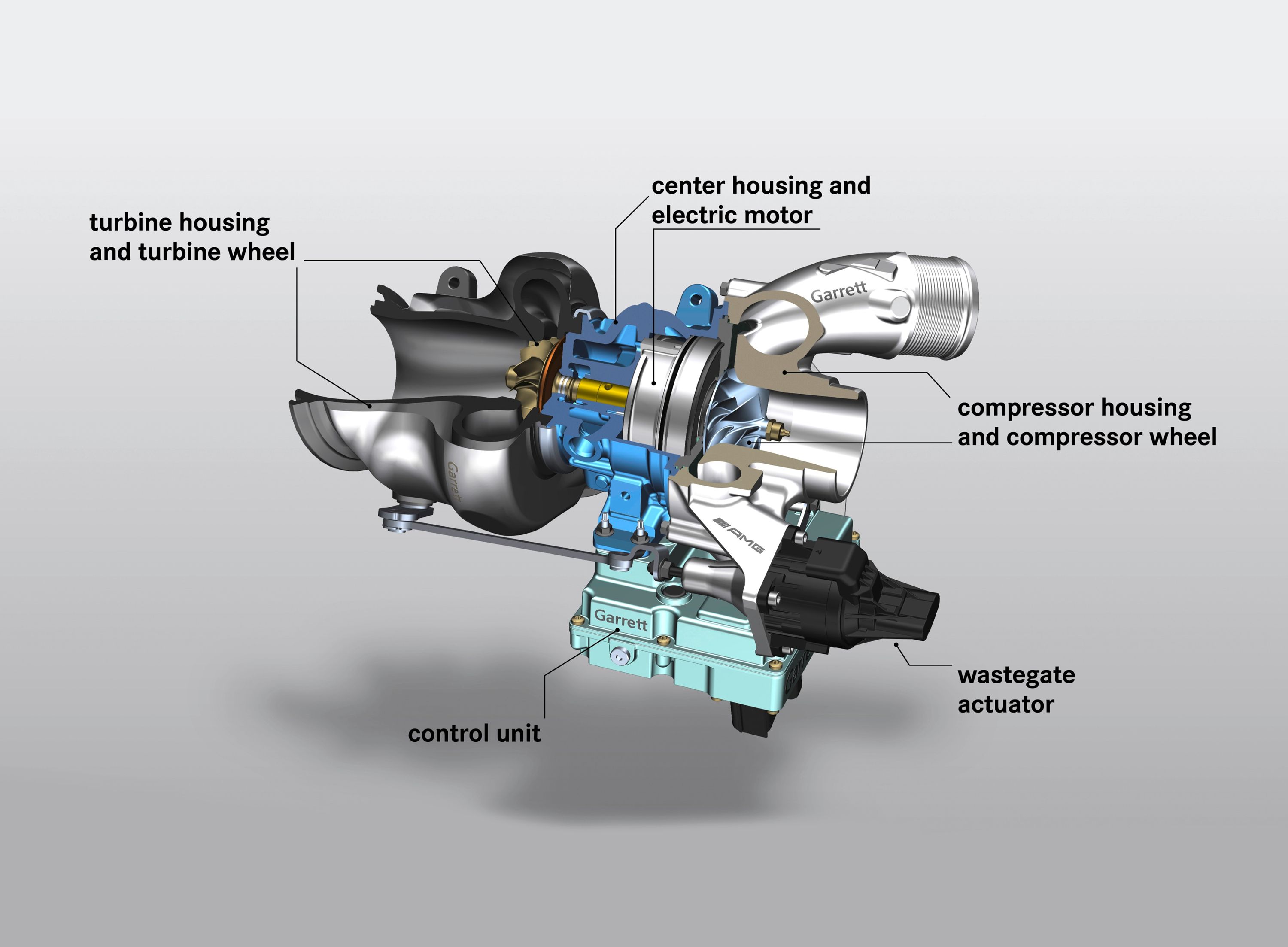
Plenty of cars these days are powered by a turbocharger, and it's not hard to understand why. They provide additional torque, power, and efficiency compared to a similarly-sized normally or naturally aspirated engine. However, some are fearful of turbocharging, worrying that it adds unnecessary complexity and additional potential failure points for the engine, but the truth is that the benefits outweigh the drawbacks. But what is a turbocharger really? Let's discuss various kinds of turbos, how they work, their pros and cons, and what types of configurations you can have.
What is the Function of a Turbocharger?
Before we discuss how a turbocharger works, we need to understand why it is useful. The most obvious benefit to a turbocharger is that it increases power. Second to that, it can also improve fuel economy, but this usually a by-product of the increased low-end torque that typically characterizes a turbocharged engine. With the turbocharger compressing the air in the engine so much, less fuel is needed for the engine to produce power. The denser the air in the engine is, the more oxygen is in the combustion chamber. With more air, the more fuel you can add. While this seems counterintuitive, the truth is that the car is able to produce more power while doing less work. As a result, you need to rev the engine less to accelerate and thus ultimately burn less fuel. Basically, a turbocharger is a device whose sole purpose is to make an engine produce more power with less fuel and fewer cylinders than would otherwise be necessary. If your goal is 300 horsepower with a 2.0-liter engine, then adding a turbo would make the achievement of that figure far easier and therefore more economical.
How Does a Turbocharger Work?
The previous section discusses this briefly, but here we will go into the details of how a turbo system works. As with any fire, to get things started, you need spark, fuel, and air. Oxygen helps the fuel burn while spark starts the reaction. With a normally aspirated engine, the intake system sucks air into the combustion chamber above the piston, where fuel is also injected in a very fine mist. When the piston reaches top-dead-center, or the highest point in its stroke, that mixture of air and fuel, whether it be diesel or gasoline, is compressed. At that exact moment, the spark plug ignites the mixture, forcing the piston down. The better that the air is compressed before entering the combustion chamber, the more air can be crammed in, and the more fuel can be added to the equation. A turbocharger basically enhances the whole process by forcing more air in under more pressure.
Now, to understand how a turbocharger works, we also need to understand how it is constructed. A turbo looks like it's one solid piece, but it has many parts; a turbine in the middle is connected to both the compressor (cold) and exhaust (hot) sides. The exhaust manifold of a normally aspirated car runs its piping down to a collector, where these pipes join into one and become the exhaust. On a turbo car, the same thing happens, but the collector joins with the hot side of the turbo. Going in this side of the turbo, the exhaust gasses spin the compressor on their way through, before exiting out the exhaust wheel and down the downpipe. This causes the other side of the turbine to spin too, at the same rate. This side of the turbo sees fresh air supplied directly to the wheel via the front of the turbo, which gives the turbo added impetus to spin and fresh air. As that compressor wheel is spun, the air from the intake is helping to cool the air, as is the oil system between the hot and cold sides of the turbo. The compressor, or cold side, of the turbo then has clean, fast-moving, compressed air. This air is channeled through boost pipes to the intercooler (or in some cases, a charge cooler), where it is cooled. As it gets cooler, it gets denser, which allows yet more air to be forced into the piping. This compressed air then makes its way into the intake manifold/plenum. Under high pressure, loads more fuel can be added, and the same spark that starts the combustion process in a regular engine starts this explosion. With more fuel, the explosion is bigger, forcing the piston down faster and therefore doing more work, or creating more power. As the exhaust gas leaves the engine via the exhaust manifold, that turbo compressor spins more again, restarting the whole process.
In order to ensure that there isn't too much boost in the system, air is released via the wastegate, which can be made with either a spring or an actuator. Once the system realizes maximum boost, the wastegate opens, releasing gasses down the exhaust. In aftermarket applications, the wastegate 'screamer' pipe can be directed outside of the exhaust for a very loud noise during hard acceleration. To avoid over-boosting the turbo when you let off the gas before the wastegate opens, a dump valve releases excess air into the atmosphere, and the system needs to build boost again, which can sometimes cause turbo lag, or slow responses from the throttle. In some cases, a diverter valve is used instead. This follows the same principle but reroutes the extra air back into the intake system and away from the turbo core. This generally improves response, but the limits of high-performance tuning are generally reached sooner.
What is the Benefit of a Turbocharger
Now that you know how it works, the benefits of having a turbocharger should be clearer, too. Here are some of them:
- Improved torque: As we've discussed earlier, a turbocharger improves torque, which makes a car equipped with one easier to drive up steep inclines and more capable of towing high capacities.
- More power: With the same size as a naturally aspirated engine, an engine with a turbocharger can provide more power sooner in the rev range.
- Greater fuel efficiency: Because the engine has less work to do, you burn less fuel, and thus spend less at the pumps.
- Better low-end acceleration: Turbocharged cars are much more enjoyable to drive around town and are better at accelerating at low rpm. With the right setup, this boost in performance can even be delivered in a way that feels linear, as normally aspirated motors usually are.
- Greater tuning potential: Although any engine can be modified to improve its performance, a turbocharged engine can take advantage of all of the upgrades available to normally aspirated engines as well as some bespoke ones that only turbos can take advantage of. Thus, it's not uncommon to see a modified 2.0-liter turbo-four achieve the same power and torque as a much bigger V8. For example, Volkswagen's 2.0-liter TFSI can easily produce the same power as Chevrolet's LT2 6.2-liter V8 with very few upgrades.
Negative Aspects of Driving a Turbocharged Car
Offhand it would seem that having a vehicle with a turbocharger is ideal, but there are also some disadvantages of having a turbocharger, too:
- Increased complexity: A turbocharger is a fantastic invention, but to run one, an engine needs a wealth of specific components. The engine itself needs to be built in a way that the compression of the engine is safe for turbocharging, additional piping - like an oil line to and from the turbo - is necessary, additional oil and air cooling is required, and the overall package takes up more space. The installation process also requires careful space and heat management.
- Fine-tuning required: It's a lot more difficult to tune a vehicle for turbocharging, as you are no longer just looking at the limits of the preexisting hardware but are also required to consider how that specific turbo (numerous sizes and configurations are available) makes the most of the gasses passing through it. Some turbos are more efficient at high rpm while smaller turbos do their best work at the low end of the scale. Tuning the driveability of the car in a manner that counteracts the characteristics of the turbo will result in a failure, but there are multiple facets to consider, from the strength of your connecting rods to the flow of your cylinder head.
- Reliability: This is not so much of a concern these days. Cars have been constantly redeveloped and there is a sensor for just about everything nowadays. However, in aftermarket applications especially, turbo engine failure can be common if the person performing the conversion is inexperienced. With normally aspirated cars, simply assembling the upgraded components and fitting them is almost all that's needed, with greater margins of error for tuning allowed except in high-performance N/A applications.
- Lag: Again, this is an issue that is very uncommon with OEM turbo setups these days, but on aftermarket tuning applications, a larger turbo than standard can often cause lag, which requires the engine to be revved up much higher - with not much power - until the turbo spools up and maximum performance is reached. This makes the car tricky to drive smoothly unless you're at full throttle. But again, with the right turbo for the right engine and the correct supporting modifications, this is not much of a concern.
Muffles Engine Sound
Turbos tend to make the air escaping the engine a little muffled, due in part to the fact that there are other noises happening, but mainly because of the fact that the turbo itself acts as a muffling chamber. The result is that the engine doesn't scream as loudly and many of the natural tones of the engine itself are lost.
Turbocharger vs. Supercharger: What’s the Difference?
This section is covered in greater detail here, but the basics are as follows. You already know how a turbo works and understand that it runs off the exhaust gas of the engine, ultimately using waste product to power itself. A supercharger, on the other hand, is generally driven by a belt connected to the crankshaft of an engine. As a result, the supercharger actually saps power from the engine before producing more. However, throttle response is generally much better. A supercharger is also arguably even more complicated than a turbo, and upgrading a supercharged engine can be tricky unless you're only interested in the basics like better pulleys and shorter belts.
How Much Power Does a Turbo Add?
It's near impossible to put a set percentage on this, as different turbos perform differently. Some will make minimal power at 3,000 rpm and loads of it at 5,500, while others can reach full boost before 2,000 and run out of puff by 4,000. That being said, assuming that the turbo has the perfect configuration to perform on an engine as if it is almost naturally aspirated, between 6-8 psi of boost pressure can give approximate gains of between 15 and 25 percent. If you're willing to sacrifice throttle response, those numbers can jump significantly.
Types of Turbochargers
There are many different ways of turbocharging a car. The terms bi-turbo, twin-turbo, twin-scroll turbo, ball-bearing turbo, journal-bearing turbo, and hybrid turbo are all terms that turbo fans are familiar with. Here is a breakdown of the various types of turbochargers available:
Twin-turbo/Bi-turbo
In truth, a twin-turbo setup is meant to refer to a turbocharged engine where two turbochargers of equal size are fitted. An example is the original R32 Nissan Skyline GT-R. Bi-turbo, on the other hand, is meant to signify a setup where the two turbos are of unequal size. However, many manufacturers and users have interchanged these meanings. In any case, twin-turbo setups usually run a parallel setup, where the two turbos are each supplied by one half of the cylinders in the engine. A sequential turbo setup uses one turbo for low-end response with the other turbo taking over at higher rpm, or in some cases, running alongside the first turbo. With a compound turbo setup, the smaller turbo literally feeds the bigger one, giving you low-end response, a power curve that doesn't crash at high rpm, and relatively spike- and lag-free power delivery. However, this is massively complex and a real challenge to master.
Ball-bearing/Journal-bearing
Journal-bearing turbos are generally cheaper while ball-bearing turbos cost more. Journal-bearing turbos are also generally more reliable but don't respond as quickly as ball-bearing turbos. The latter have fewer individual moving components, which means that there are fewer things causing friction inside the turbocharger cartridge. Thus, ball-bearing turbos with their fewer moving parts will spool up much faster, by an average of 15 percent when compared like-for-like, but are usually costlier to repair, since you usually have to replace the entire cartridge if damage occurs.
Twin-scroll Turbo
A twin-scroll turbo has two small inlets where the turbo takes in gasses rather than one large one, but must be mated to an engine with an even number of cylinders. An Audi RS3 with its five-cylinder engine can't use this kind of turbo. Why? Well, let's consider a four-cylinder engine. If its firing order is 1-3-4-2, then as cylinder one stops providing pressure into one scroll of the turbo, cylinder three is filling the other scroll. This creates an overlap effect of constant boost, instead of what happens in a traditional turbo, where the gasses of the engine are fighting against each other. Ultimately, a twin-scroll turbo allows for the following: as one cylinder ends the exhaust stroke and starts to open the intake valve, another cylinder is doing the opposite, which increases the continuous pressure in the turbo, giving you better throttle response and faster spool-up. With an odd number of cylinders, this would be impossible to achieve, as the additional cylinder would have to favor one or the other side of the turbo intake.
Hybrid Turbos
This is arguably the best way of improving your existing turbo's performance with minimal effort. It is traditionally a term used in the aftermarket scene, but when you hear of a bigger compressor wheel on a facelifted vehicle, that means the car has a hybrid. A hybrid turbo is defined as one that uses components from two types of turbos. Generally, what this means is that the size of the compressor and exhaust housings remains the same, but with bigger and/or lighter wheels on the turbine. This allows more air to flow, giving you more power with minimal lag, but you are still limited by the size of the turbo, and machining a turbo to fit bigger wheels has a limit. Too much heat can cause a cracked turbo, while too much turbine speed can result in damaged wheels, entire cartridges, or the failure of the turbo as a whole.
VGTs
Variable Geometry Turbos are arguably the pinnacle of turbocharging. Just one turbo is fitted, but the vanes inside the turbo alter the area-to-radius ratio to align with the rpm of the engine. At low engine speeds, a low A/R ratio (the result of the vanes moving to create a relatively closed system inside the turbo) increases the exhaust gas velocity, causing the turbo to spool quickly. As the revs climb, the vanes move to allow more air through, which means that you achieve your target boost level early, have great throttle response, and don't run out of power as your engine increases revs. However, these are very expensive systems and are nearly impossible to fix without replacing the whole turbocharger. The vanes can also be easily damaged by heat, which is why diesel engines like Ford's Powerstroke engines, with their lower EGTs (exhaust gas temperatures), favor them more than gasoline engines. Performance is high, but so is price with these turbos.
Electric Turbos
If you had to ask, "Do turbochargers work all the time?", the answer would be yes, so long as they are connected. But electric turbochargers are smart, and although they act as regular turbochargers most of the time, they can stop working at times. Let's explain. An electric turbo has a small electric motor connected to the turbine shaft. In situations where there is plenty of lag, the electric motor can speed up the turbines to increase low-end power. They then stop working under deceleration, using that kinetic energy to charge. This is even better than a VGT turbo for response and power, but added complexity, weight, and numerous additional components all mean that electric turbos are not cost-effective for most applications. The smallest change in temperature can also negatively affect an electric turbo system drastically.
Conclusion
Just like any technology, there are always pros and cons. But with turbocharging, the benefits far outweigh the drawbacks. You get loads of performance and better fuel economy. However, as with any mechanical component, care must be taken. Allowing oil to circulate and heat up before driving hard is even more important here, and never load the turbo. What does this mean? Well, if you put your foot flat on the accelerator while you can still feel the engine trying to build boost, this is loading the turbo. Essentially, you're forcing the turbo to get spooled up too fast before it has sufficient fuel and air running through it. As a result, the turbo can overspin and the turbine shaft can break. Follow these basic rules and you'll be boosting happily.



